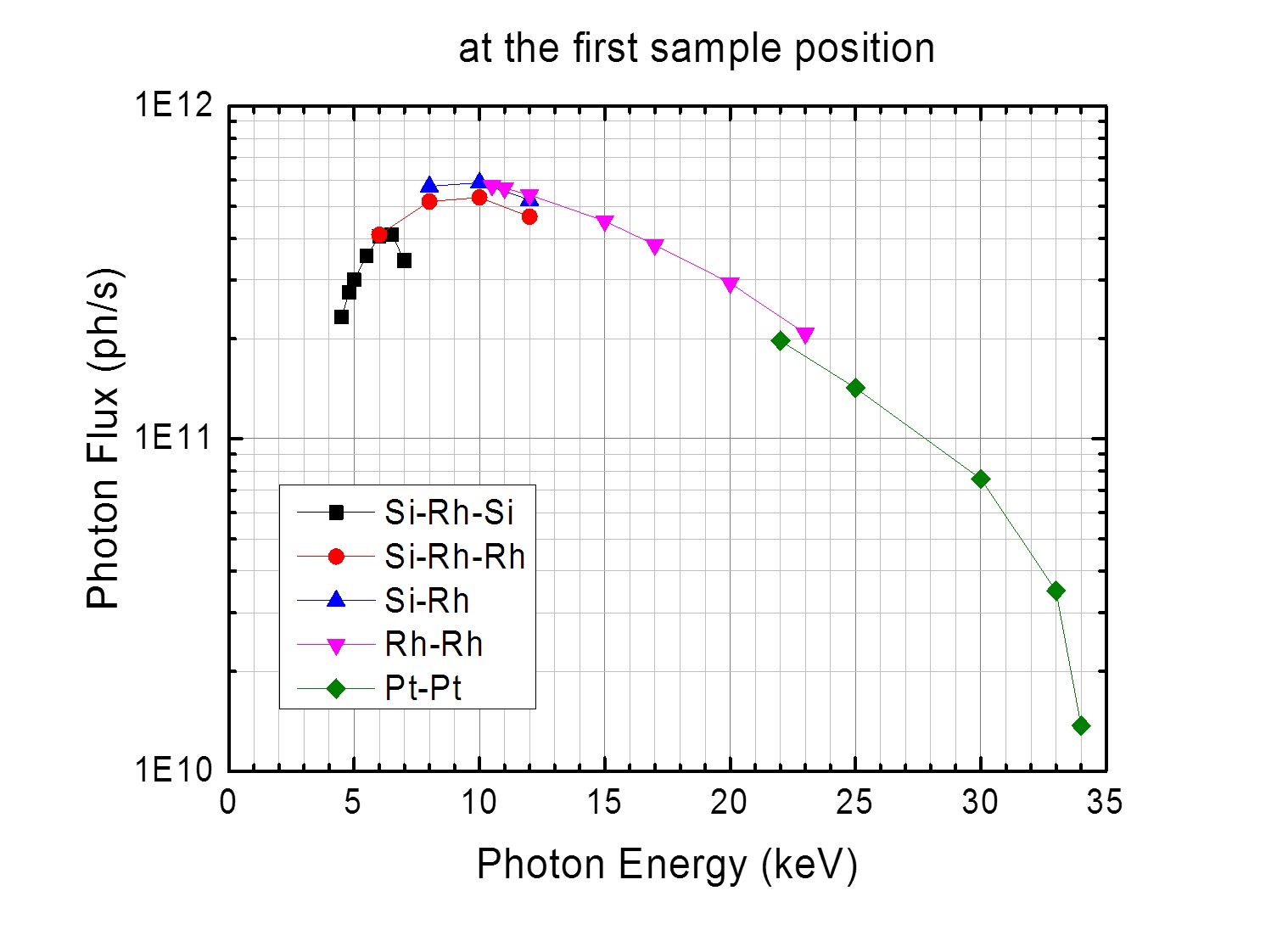44A Quick-scanning X-ray Absorption Spectroscopy
Beamline Specification
- Energy range: 4.5 – 34 keV
- Flux (microfocused): 5 × 1011 (2 × 1010) s-1 at 10 keV
- Beam size (microfocused): 60 (H) × 200 (V) (5 × 5) μm2
- Resolving power: 7000
- High harmonic ratio: < 10-4
Beamline Layout

TPS 44A is constructed by several optical devices including a collimating mirror (CM), a quick-scanning monochromator (Q-Mono), a toroidal focusing mirror (TFM) and a set of K-B mirrors. Because of the large source divergence of the bending magnet, the CM is used in this beamline to collimate the vertical beam and to increase the resolving power of the monochromator. The CM is located at 23 m from the source. After the CM, a Q-mono is placed at 26 m to select the photon energy and has the capability of doing step-by-step scans and quick scans as well. After the Q-mono, the TFM at 30 m focuses the beam to the size of 100 × 200 μm2 at 45 m where is the first sample position. After the first sample position, the second focal point is formed at 52 m by a set of K-B mirrors for the micro-beam experiments. The beam size at the second focal point is 5 × 5 μm2. Besides these major optics, there are several slits to define the beam size and divergence of the incident beam and to block away the scattering beam. Table III lists the tentative positions and size of the beamline components. The vacuum bellows, vacuum pipes, and monitoring devices will be inserted between those components.
High-order Harmonics Rejection and Photon flux
The CM has three reflection surfaces, Si, Rh, and Pt, and the TFM has two, Rh and Pt. For high-order harmonics rejection, there are several combinations of reflection coatings on CM and TFM. Working at low energy, these combinations are still difficult to reach the harmonic ratio of one over a thousand. Therefore an extra plane mirror with Rh and Si stripes will be inserted before the first sample position to further suppress high-order harmonics.


44A Construction Design Report (click here to download)